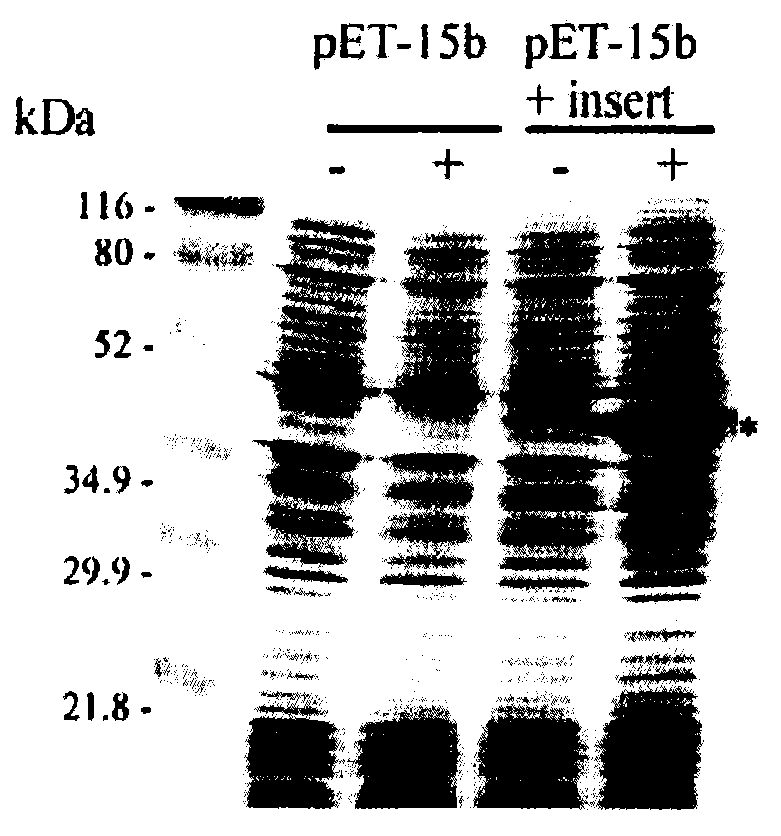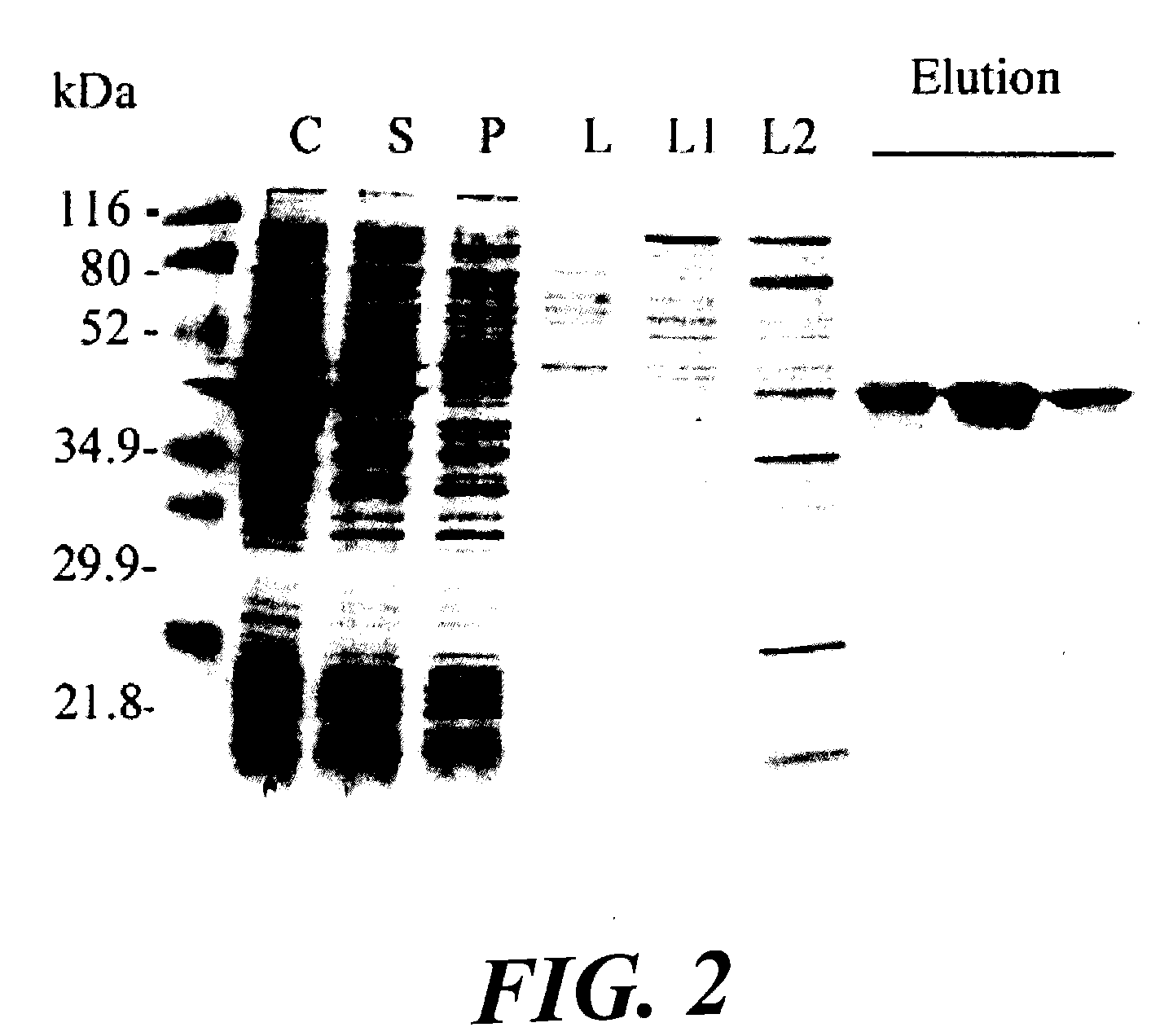Plastidial targeting peptide
- Summary
- Abstract
- Description
- Claims
- Application Information
AI Technical Summary
Benefits of technology
Problems solved by technology
Method used
Image
Examples
example 1
Characterization And Cloning Of The Arabidopsis Thaliana IE41 Protein
[0123]In prior studies aimed at identifying the most hydrophobic proteins of spinach chloroplast membrane preparations (SEIGNEURIN-BERNY et al., Plant. J., 19, p.217-228, 1999 ; FERRO et al., Electrophoresis, 21, 3517-3526, 2000), several peptides derived from a 41 kDa protein inhibiting great sequence similarity with a putative protein from Arabidopsis (TrEMBL accession number Q9SV68) were demonstrated.
[0124]However, analysis of the primary sequence of this 41 kDa protein by means of the TMPred program (HOFMANN and STOFFEL, Biol. Chem. Hoppe-Seyler., 347, 166, 1993), did not make it possible to detect transmembrane segments able to provide anchoring of the protein in a lipid bilayer.
[0125]To confirm the location of this protein in the chloroplast envelope, the corresponding cDNA was cloned and the recombinant protein was overexpressed in E. coli in order to obtain polyclonal antibodies directed against this protei...
example 2
Location Of The 41 Kda Protein In Chloroplasts
[0149]During the purification procedure, the 41 kDa protein behaves like a protein that is water soluble and slightly hydrophobic, which raises the question of its effective association with the chloroplast envelope.
[0150]Its subcellular location was therefore verified by analyzing various chloroplast fractions.
[0151]Crude chloroplasts are obtained from 3-4 kg of spinach (Spinacia oleracea L.) leaves and are purified by isopycnic centrifugation on a Percoll gradient (DOUCE and JOYARD, Methods in chloroplast Molecular Biology. Edelman, M., Hallick, R. and Chua, N.-H., eds. (Amsterdam : Elsevier Science Publishers BV), 239-256, 1982). At this stage, protease inhibitors (1 mM PMSF, 1 mM benzamidine and 0.5 mM aminocaproic acid) are added in order to prevent any protein degradation. The purified chloroplasts are lysed in a hypotonic medium, and the envelope membranes are purified from the lysate by centrifugation on a sucrose gradient (DOUCE...
example 3
Purification And Characterization Of The Spinach IE41 Protein
[0194]Surprisingly, the IE41 protein purified from spinach chloroplasts and the recombinant Arabidopsis protein have a similar size by SDS-PAGE and Western blotting, which suggest the possibility that IE41 may be targeted to the inner membrane of the envelope without requiring the cleavage of an N-terminal import sequence.
[0195]To test this hypothesis, the IE41 protein present in the envelope of spinach chloroplasts was purified in order to sequence it and to compare its sequence with that of the corresponding cDNA.
Immunopurification of the Spinach IE41 Protein
[0196]Chloroplast envelope proteins (1 mg) are solubilized in 1 ml of 50 mM Tris / HCl buffer containing 150 mM NaCl and 6 mM CHAPS and centrifuged (20 min, 72 000 g, Beckman L2 65B, SW28 rotor). The soluble proteins are incubated for 1 h at 4° C. with 33 μl of polyclonal serum directed against the recombinant Arabidopsis IE41 protein. 50 μg of agarose-protein A (BOEHR...
PUM
| Property | Measurement | Unit |
|---|---|---|
| Fraction | aaaaa | aaaaa |
| Fraction | aaaaa | aaaaa |
Abstract
Description
Claims
Application Information
 Login to View More
Login to View More - R&D
- Intellectual Property
- Life Sciences
- Materials
- Tech Scout
- Unparalleled Data Quality
- Higher Quality Content
- 60% Fewer Hallucinations
Browse by: Latest US Patents, China's latest patents, Technical Efficacy Thesaurus, Application Domain, Technology Topic, Popular Technical Reports.
© 2025 PatSnap. All rights reserved.Legal|Privacy policy|Modern Slavery Act Transparency Statement|Sitemap|About US| Contact US: help@patsnap.com



